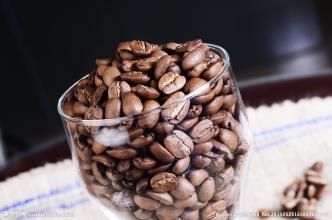The reason why coffee tastes different from sunburn and washing-honey-treated coffee beans are washed in the sun.
The reason why coffee tastes different from sunburn and washing-honey-treated coffee beans are washed in the sun.
Due to the peeling machine, there is bound to be some residual pulp still attached to the parchment of coffee beans. Coffee beans are then placed in a fermentation tank to decompose the residual pulp and parchment with natural enzymes. The fermentation process usually ends within 24 to 36 hours, depending on the temperature, the thickness of the residual pulp, and the concentration of enzymes. Next, the coffee beans will be washed with clean water until the pulp and parchment are removed. The fermentation process must be strictly monitored, otherwise, some bad sour taste or taste will be contaminated on the coffee beans. After processing, the surface of the coffee beans will become rougher and less sticky.
After fermentation and washing, the water content of coffee beans is about 57%. Due to the excessive moisture of coffee beans, the water content is usually reduced to 12.5% by machine drying or sun exposure. If you use machine drying, it usually takes 2 to 3 days to effectively reduce the water content to the ideal data. If you use the sun, you need the weather, and the relative time will be extended to 1-2 weeks.
When the water content of coffee beans is effectively reduced to 12.5%, the coffee beans will be stored for export. Finally, before the coffee is exported, the parchment and the last layer of silver will be removed by machine. Then, it goes through the steps of cleaning, screening, classification, classification, and packaging.
Washed coffee beans can make the coffee taste cleaner, free of miscellaneous flavors and have charming fruit aromas. The color of washed coffee beans will be more turquoise or grayish green. The coffee in the washing process tastes clear, bright and free of miscellaneous flavor.
1. Choose beans:
Put the harvested fruit in the water tank, and the ripe fruit will sink, while the unripe and overripe fruit will float up and can be removed.
2, dry:
Put the selected ripe fruit in the square and expose it for 5-6 days until it is fully dry. At this time, the fruit becomes dark brown and the moisture content is 13%.
3, shelling:
After drying, the peel becomes fragile and easy to fall off, and can be removed by machine. Farms run by enterprises usually have their own shelling factories, while small farms are processed by processing centers.
4, selection and grading:
Exquisite farms identify defective beans manually or by machine, pick them out and throw them away. Manual selection usually uses a transmission belt about 1 meter wide, with several female workers sitting on both sides visually picking out bad beans, and some good farms are even selected several times until defective beans are not seen. Machine selection rules use computers to identify defective beans, followed by a grading process that divides coffee beans into several quality grades according to established standards. Good coffee enters the selected coffee market, while bad coffee flows into the commercial coffee market.

Important Notice :
前街咖啡 FrontStreet Coffee has moved to new addredd:
FrontStreet Coffee Address: 315,Donghua East Road,GuangZhou
Tel:020 38364473
- Prev

Working schematic diagram of Italian coffee machine-operation method of buttons on coffee machine
Italian coffee machine working schematic diagram-button operation method on the coffee machine 1, siphon (this is more emotional O (_) O ha!) Step 1, pour hot water into the ball under the glass, bring it to a boil over high heat and wait for the water to boil. When boiling one cup, add 200 ml of water under the ball, 175 ml when not pouring bottom water, and 350 ml when boiling two cups. After pouring water, dry the ball under the glass with a dishcloth, otherwise allow
- Next

The Grinding Calibration of the main Flavor and taste of Candle Coffee
Candlelight coffee features the main flavor taste of the grinding scale 90 + beans and the general habit of boutique beans in a completely different way of naming. First of all, unlike the usual names of producing areas and manors in the name, each bean is named according to its flavor. Candle, for example, means best approach in the local dialect. 90 + is usually named by a flavor.
Related
- What brand of black coffee is the most authentic and delicious? what are the characteristics of the flavor of the authentic Rose Summer Black Coffee?
- Introduction to the principle and characteristics of the correct use of mocha pot A detailed course of mocha pot brewing coffee is described in five steps.
- Which is better, decaf or regular coffee? how is decaf made?
- How much is a bag of four cat coffee?
- How about four Cat Coffee or Nestle Coffee? why is it a cheap scam?
- Which is better, Yunnan four Cats Coffee or Nestle Coffee? How about cat coffee? is it a fake scam? why is it so cheap?
- How about Cat Coffee? what grade is a hoax? which instant coffee tastes better, four Cat Coffee, Nestle Coffee or G7 coffee?
- Process flow chart of coffee making-Starbucks coffee making process what coffee tastes good at Starbucks
- The top ten best coffee beans in the world Rose summer coffee or Tanzanian coffee tastes good
- Yunnan four cat coffee is good to drink?_four cat coffee is a big brand? four cat blue mountain coffee is fake?

